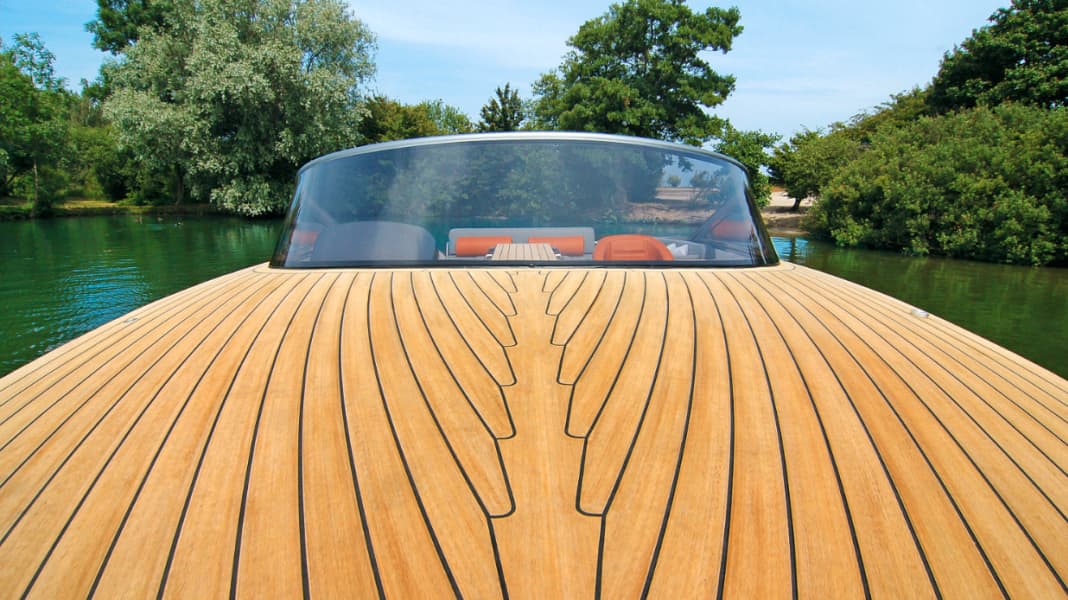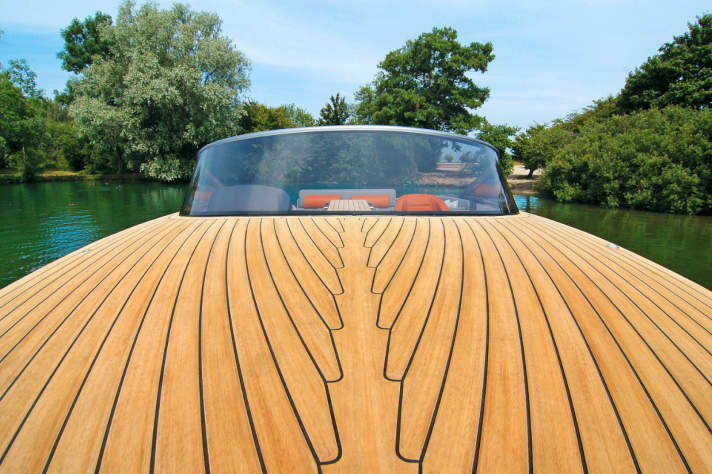

When it comes to deck coverings, traditional teak is at the top of many owners' wish lists. It looks "boaty", is durable, non-slip and gives the boat a high-quality look. What's more, teak decks also provide better insulation - both thermally and acoustically. The only disadvantage is the time-consuming and therefore expensive assembly. Traditionally, the individual teak strips are screwed and dowelled to the deck, the joints are filled with rubber compound and the whole thing is sanded.
However, this type of intensive craftsmanship is rarely seen any more. Today's teak decks are usually prefabricated according to templates as a composite board (teak deck sticks on a carrier board), with the teak layer being between 3 and 15 mm thick, depending on requirements. The carrier board is between 5 and 10 mm thick and is glued on completely.
The solid version is also manufactured according to a template. The individual bars are connected to each other using a rubber joint and joined and sanded to form a board. In the case of a strongly curved deck, the elasticity facilitates installation. The finished panels are then glued flat to the deck and the edges are grouted.
A good teak deck can last for decades, and if it is thick enough, it can easily be overhauled by sanding. Maintenance of a teak deck is usually limited to regular cleaning with a sponge or soft brush across the fibres with water and neutral soap. Teak is naturally oily: additional oiling is unnecessary, can damage the rubber joint, make the deck slippery when wet and cause stains.
The alternatives
If you don't want to put up with the silver-grey patina that forms on the surface of teak after a while, you can now choose alternative deck coverings made of composite materials from several manufacturers. All manufacturers of alternative deck coverings, with the exception of cork, use PVC (polyvinyl chloride) or PVC-like plastics which, according to the manufacturers, are largely UV-resistant, colour-stable, 100% recyclable, non-slip and easy to maintain.
We also offer the same processing options for plastic decking as for real teak decking. We offer both the laying and gluing of individual strips and the production of complete surfaces according to templates. Of course, the value of a finished deck only results from the finer points of the workmanship, regardless of whether it is a wooden or plastic deck: for example, whether the mouldings in the bow area run bluntly against the centre bar or are shaped as a fish - or whether the edge strips (reveal) have a different dimension to the standard strips.
Whether the bars on the side running deck run straight or follow the curve of the deck are things that not only drive up the labour and material costs, but ultimately also the price of the new deck. To give you an overview of the current market situation, we have taken a closer look at some suppliers.
THE ENTIRE ARTICLE CAN BE FOUND IN THE MARCH ISSUE OF BOOT MARCH ISSUE FROM BOATS THAT NOW ON SALE GIBT.
